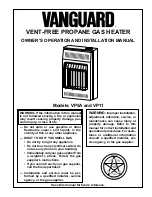
English
20
Note:
Please be sure to use the accessories provided by our company to install this electric water
heater. This electric water heater cannot be hung on the support until it has been confirmed to
be firm and reliable. Otherwise, the electric water heater may drop off from the wall, resulting
in damage of the heater, even serious accidents of injury. When determining the locations of
the bolt holes, it shall be ensured that there is a clearance not less than 0.2m on the right side
of the electric heater, to convenient the maintenance of the heater, if necessary.
4.1 The operating procedures
Check all the piping connection for leakage before turning on the electric power of the heater.
Open any one of the outlet valves at the outlet of the water heater, then, open the inlet valve.
The water heater gets filled with water. When water flows out of the outlet pipe it implies that the
heater has been filled fully with water, and the outlet valve can be closed.
Make sure that the tank is fully filled up with water; otherwise it will cause the heating elements to
be damaged.
Note: During normal operation, the inlet valve shall be always kept open.
Insert the supply plug into the socket and check the reliability of the leakage protection device.
Press the testing button, the indicator light on the plug shall turn off, and the reset button shall
bounce up; then push down the reset button, the indicator light turns on, thus verifying that the
leakage protection works well (Diagram 11
). During process of using, if the reset button can’t be
pressed, it shows the leakage protection device fails; If the reset button is pressed down and
bounce up again, then it shows the circuit leaks or power supply fails.
If the indicator lights up, the thermostat will automatically control the temperature. When the water
temperature inside the heater has reached the set temperature, it will switch off automatically, when
the water temperature falls below the set point the heater will be turned on automatically to restore the
heating.
4.2 Operating of the Unit
Part 4:
Methods of Using






































